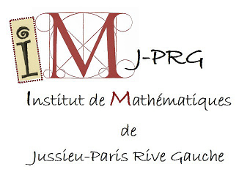| Résume | P-minimality is a concept that was developed by Haskell and Macpherson as a p-adic equivalent for o-minimality. For o-minimality, the cell decomposition theorem is probably one of the most powerful tools, so it is quite a natural question to ask for a p-adic equivalent of this.
In this talk I would like to give an overview of the development of cell decomposition in the p-adic context, with an emphasis on how questions regarding the existence of definable skolem functions have complicated things. The idea of p-adic cell decomposition was first developed by Denef, for p-adic semi-algebraic structures, as a tool to answer certain questions regarding quantifier elimination, rationality and p-adic integration. This first version eventually resulted in a cell decomposition theorem for P-minimal structures. This theorem, proven by Mourgues, was however dependent on the existence of definable Skolem functions. The second part of the talk will focus a bit more on Skolem functions, and sketch a generalized version of the Denef-Mourgues theorem that does not rely on the existence of such functions, by introducing a notion of clustered cells. We will explain the notion, give an informal sketch of the proof, and compare with other versions of cell decomposition. |

